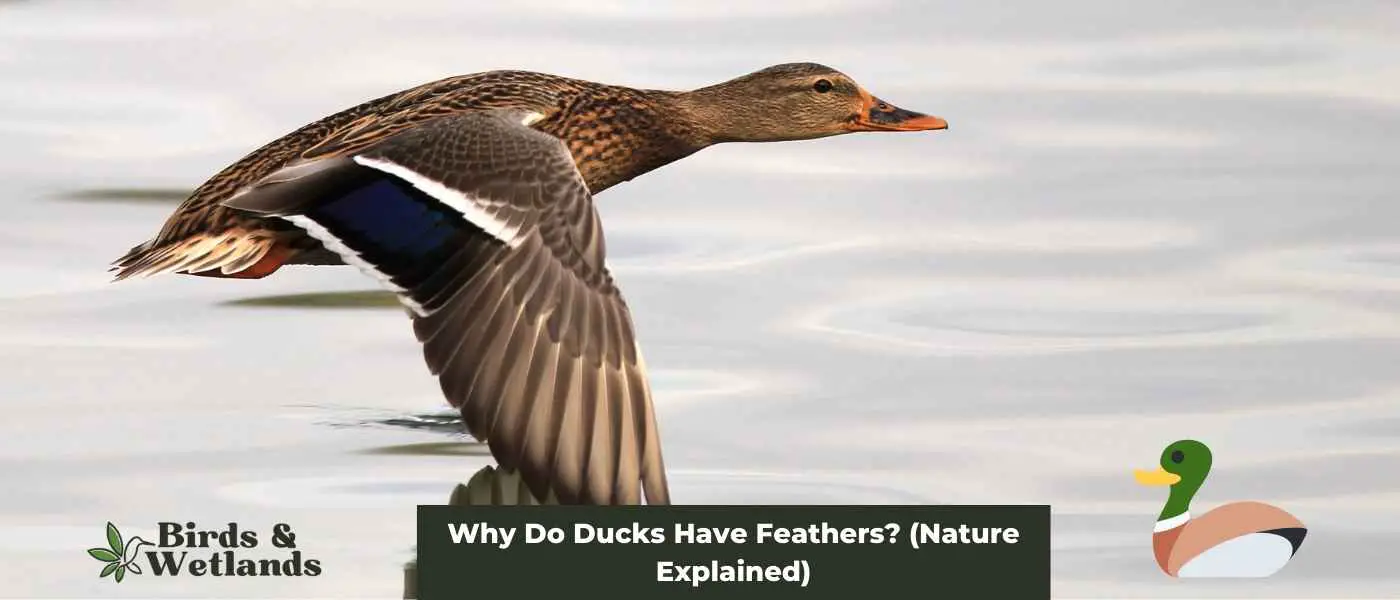Feathers: the quintessential feature of our avian friends. When you think of ducks, their vibrant, varied plumage likely comes to mind.
But have you ever paused to ponder why ducks have feathers?
Ducks have feathers for several critical reasons. The main function of feathers is to provide insulation, keeping ducks warm in cold environments and cool in hot ones. Feathers also provide buoyancy, helping ducks float on water. They aid in flight by creating lift and are essential for courtship displays and camouflage.
Key Takeaways on Why Do Ducks Have Feathers
- 1. Ducks use feathers for flight, insulation, protection, and attracting mates. 2. Ducklings are born with down feathers that provide warmth. They start developing contour feathers, essential for flight, between 7 to 9 weeks old.
- Four types of feathers can be found on ducks: contour, down, semiplume, and filoplume feathers.
- Ducks produce preen oil, which waterproofs their feathers, aiding in maintaining body temperature while swimming in cold water.
- Male ducks, typically more vibrant than females, use their striking feathers for courtship displays.
- Feathers also serve a crucial role in species and gender identification among birds.
- Feathers provide insulation, enabling ducks to survive in cooler climates.
How Do Ducks Use Their Feathers?
Feathers are the defining characteristics of ducks and other birds. Here’s how ducks use their feathers:
Flight
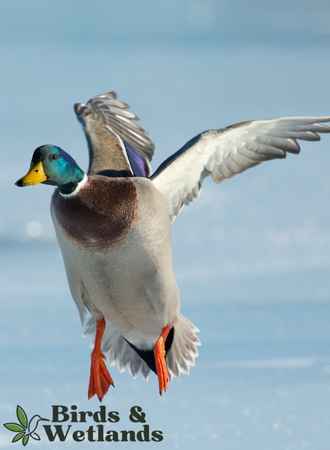
The key to a duck’s ability to fly is its feathers. The feathers on a duck’s wings form a dense, tightly-packed layer that provides the necessary lift and air resistance for flight.
To generate enough power to take flight, ducks must vigorously and continuously flap their wings, much like a predatory bird. They also use their strong legs and feet to propel them into the air, creating an efficient flight mechanism that allows them to avoid predators and easily explore new territories.
Although how ducks use their feathers to fly may appear complicated, it is deeply ingrained in their nature. After all, they are migratory birds. Ducks need to migrate to find better food sources and to lay eggs. It is difficult for them to find food when everything is covered in snow.
Staying Dry
Feathers are essential to the ability of most birds to remain dry. With their unique preen oil, duck feathers can keep the birds dry.
Due to their resilient feathers, ducks can dive deep into the water without becoming waterlogged or losing buoyancy. Due to these feathers, ducks can remain submerged for hours without needing to surface for air. Feathers help keep these ducks warm and comfortable when swimming in cold water.
Attracting Mates
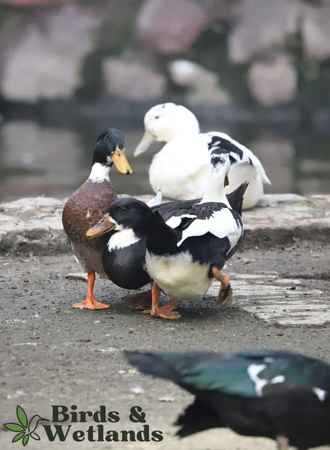
To attract mates, male ducks use their feathers in various ways. In most duck species, the drakes have much more vibrant and striking feather patterns than the females.
Male ducks need their appearance to attract and court females. And to do so effectively, they must be able to distinguish themselves from the competition. The coloring and patterns also help male ducks in their elaborate courtship rituals, which include loud calls and theatrical displays.
As part of courtship, males frequently fan out the brightly colored and intricate plumage on their heads and backs. These elaborate displays serve as a means for drakes to attract mates and persuade females of their worthiness as partners. Without these eye-catching feathers, male ducks would have more difficulty attracting mates and females.
Protection From The Elements
Ducks can survive the elements, thanks to a nice, thick layer of feathers. Feathers play a crucial role in protecting them from the elements by providing water resistance and thermal insulation.
As waterfowl, ducks are ideally suited to a life on or near the water. Their feathers are not waterproof by nature. However, these aquatic birds can waterproof their feathers through a process known as preening.
Preening is the process by which ducks groom themselves and apply a special waterproofing oil to their feathers. They use their beaks and webbed feet to spread the oil. Thus, moisture is kept out, and their downy underlayers remain dry and warm.
Along with their body fat, their feathers provide extra insulation to help them stay warm and comfortable even in colder weather or when exposed to wind and rain. This special oil or preening fluid also keeps their feathers soft and pliable.
But perhaps even more importantly, a duck’s feathers protect it from harsh weather conditions such as strong winds, intense sunlight, and heavy rains. Each feather’s outermost layer helps create a barrier that keeps these elements out, preventing dehydration, overheating, freezing, and sunburn.
Why Do Ducks Have Tail Feathers?
Ducks have distinctive tail feathers that serve a variety of functions. These feathers assist aquatic birds with fly control and flight stability. In fact, the feathers provide the ducks with a sense of momentum and inertia as they move through the air, making it easier for them to navigate turns, change course, and even reverse course.
Tail feathers also function as brakes during landings. These feathers assist the ducks in slowing down and stopping on solid ground, allowing them to conserve energy after long flights over water.
Do Ducks Have Waterproof Feathers?
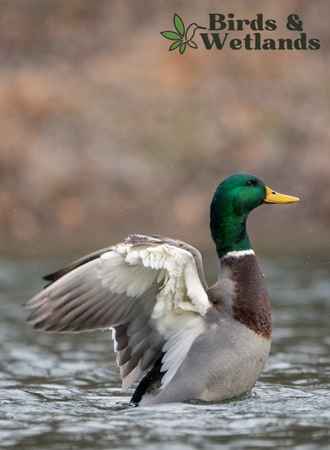
It is well known that ducks have waterproof feathers. The secret to this water resistance is a grooming technique known as preening.
During preening, ducks apply a thin layer of oil to each feather, secreted by an oil gland at the base of their tail. This water-resistant coating prevents water from becoming trapped between the feathers, allowing the duck to remain dry, warm, and agile in even the wettest environments.
What Are the Different Types of Duck Feathers?
Feathers on a duck come in four types, each serving distinct functions:
Contour
These are the outer feathers providing structure, warmth, protection, and aid in flight. They also help ducks repel water and keep their downy undercoat dry.
Down
Located beneath contour feathers, these soft, lightweight feathers insulate ducks against heat loss, helping them maintain a comfortable body temperature.
Semiplume
Found between down and contour feathers, these feathers insulate the duck in cold weather and provide crucial support and balance during flight.
Filoplume
These small, stiff, hair-like feathers help regulate body temperature and are found in various parts of a duck’s body.
Contour Feathers
Duck contour feathers are the outer feathers. These feathers have a distinct indentation near the top of each feather shaft, which gives them a serrated or ruffled appearance. This unique characteristic distinguishes duck contour feathers from other types of feathers, as it is the only part of the feather that contacts other feathers during flight.
A contour feather has a hackle feather, which is a long, fine feather covering a duck’s neck and saddle. Each contour feather also has tiny barbules that radiate from the barbs and then interlock to form a smooth and uniform plane.
Due to their unique form and function, duck contour feathers provide structural support for the bird, acting as a protective layer that insulates the duck and keeps it warm. These feathers also help distinguish a duck from other duck breeds.
Contour feathers play an important function in flight, allowing the duck to remain airborne and easily maneuver.
Duck contour feathers serve a significant purpose in terms of waterproofing. They help repel water and keep the downy undercoat of the duck fluffy and dry.
Down Feathers
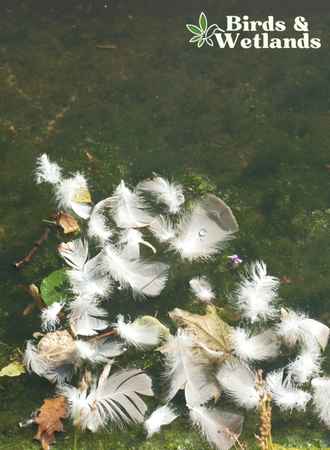
Down feathers are the soft and lightweight feathers located beneath the contour feathers of a duck. These feathers cover the tough exterior feathers.
Due to their softness and lightness, these feathers insulate ducks against heat loss and the elements and keep them warm even when swimming in cold water or wading through snow.
Down feathers are highly adaptable. Humans use them to produce insulating materials such as comforters, jackets, and other clothing. As it provides the best comfort and support for sleepers, down is also widely used in pillows and bedding.
Female ducks are masters of adaptation when it comes to their feathers. They use their down feathers to insulate and keep warm in the frigid waters where they live, and they also incorporate these soft, fluffy feathers into the nests they construct from grasses and other wetland plants. Female ducks will use their down feathers to line the interior of these nests and create a comfortable, airy environment for their fertilized eggs. The brood patch allows hens to incubate their eggs efficiently.
Lining the nest with down feathers is necessary to ensure that the eggs can develop safely without exposure to cold or damp conditions. To have enough material for a comfortable nest, many duck mothers will also collect extra down feathers from other sources, such as other nests or other ducks.
Semiplumes Feathers
Semiplume feathers are essential to the structure and function of the wing and body of a duck. These feathers, which make up the undercoat between the down feathers and the contour feathers, insulate the duck during cold weather. They also play an important role in regulating the duck’s body temperature by transferring heat away from hot spots when necessary.
These semiplumes also feathers help maintain a constant air pressure over the bird’s body, providing crucial support and balance during flight.
Filoplumes Feathers
Ducks are distinguished by their filoplume feathers, essential in regulating body temperature. These small, stiff, hair-like feathers grow at the base of contour feathers and measure approximately 6 millimeters in length. They can be found on many parts of a duck’s body, including the wings, tail, legs, and neck.
| Type of Feather | Description | Function |
|---|---|---|
| Contour Feathers | The largest and most prominent feathers, often colorful and distinctive. | Flight, protection from elements, structure, warmth, and attracting mates. |
| Down Feathers | Fluffy, fine, and tiny feathers present from birth. | Insulation and warmth, especially for ducklings. |
| Semiplume Feathers | Feathers between the contour and down feathers. | Additional insulation and filling. |
| Filoplume Feathers | Hair-like feathers at the base of contour feathers. | Function not entirely clear, but they are found throughout the bird’s body. |
FAQs on Ducks’ Feathers
Why Do Ducks Fluff Their Feathers?
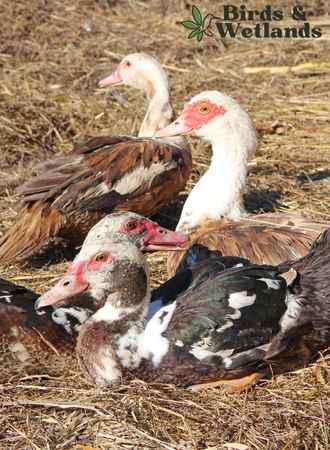
Ducks are among the most intelligent and resourceful animals when it comes to staying warm in cold weather. These waterfowl have evolved the ability to fluff their feathers, allowing them to trap an additional layer of warm air directly next to their skin. This insulation is essential for comfort in frigid temperatures and even light snow or rain.
How Long Does It Take a Duck to Molt?
Feathers are marvels of natural engineering but they need to be replaced. Ducks replace their old feathers through a natural process called molting, typically taking two weeks to complete. During molting, ducks shed their old feathers and grow new ones underneath. Most ducks molt twice a year — one in late winter or early spring and the other in mid to late summer. or shortly after the breeding season.
Are Baby Ducks Born With Feathers?
When they first hatch, ducklings have a full set of down feathers that allow them to remain warm and dry. Their eyes are open at birth, allowing them to adapt to their surroundings quickly. The mother hen uses her body and wings to shield her chicks from predators and inclement weather.
How do ducks take care of their feathers?
Ducks meticulously care for their feathers through a process called preening. Preening is essentially a bird’s method of grooming that involves using the beak to position feathers, remove dirt, and apply oil from the uropygial gland, often called the preen gland. This gland, located near the base of their tail, secretes a special oil that ducks spread over their feathers during preening.
This oil serves two main purposes. Firstly, it waterproofs their feathers, allowing them to swim or float on water without getting their feathers waterlogged. Secondly, it helps keep their feathers flexible and in good condition, ensuring they function optimally for flight.
Ducks also realign any feathers that have been displaced. They use their bills to zip the feathers back into place by running the length of the feather through their beak, which realigns the barbs and barbules and restores the feather’s optimal shape.
Why do ducks have different colored feathers?
The diverse colors of duck feathers primarily serve two purposes: mate attraction and camouflage.
Male ducks, or drakes, often sport vibrant and striking feather patterns. These colors are a result of sexual selection, meaning they evolved to make the drake more attractive to potential mates. Bright, colorful plumage is a sign of health and vitality, signaling to females that the male is a good candidate for passing on genes.
On the other hand, female ducks usually have more muted, earth-tone feathers. These colors serve a different purpose: camouflage. Female ducks are primarily responsible for incubating eggs and caring for ducklings. Their subdued colors blend well with their surroundings, hiding them from predators during this vulnerable time.
The different colors help distinguish species of ducks from one another. Ducks can recognize their own species based on feather colors and patterns, which is essential for mating and social interaction.
In the case of both male and female ducks, the color of their feathers is a matter of survival, whether it’s to stand out and attract a mate or to blend in and hide from predators.

